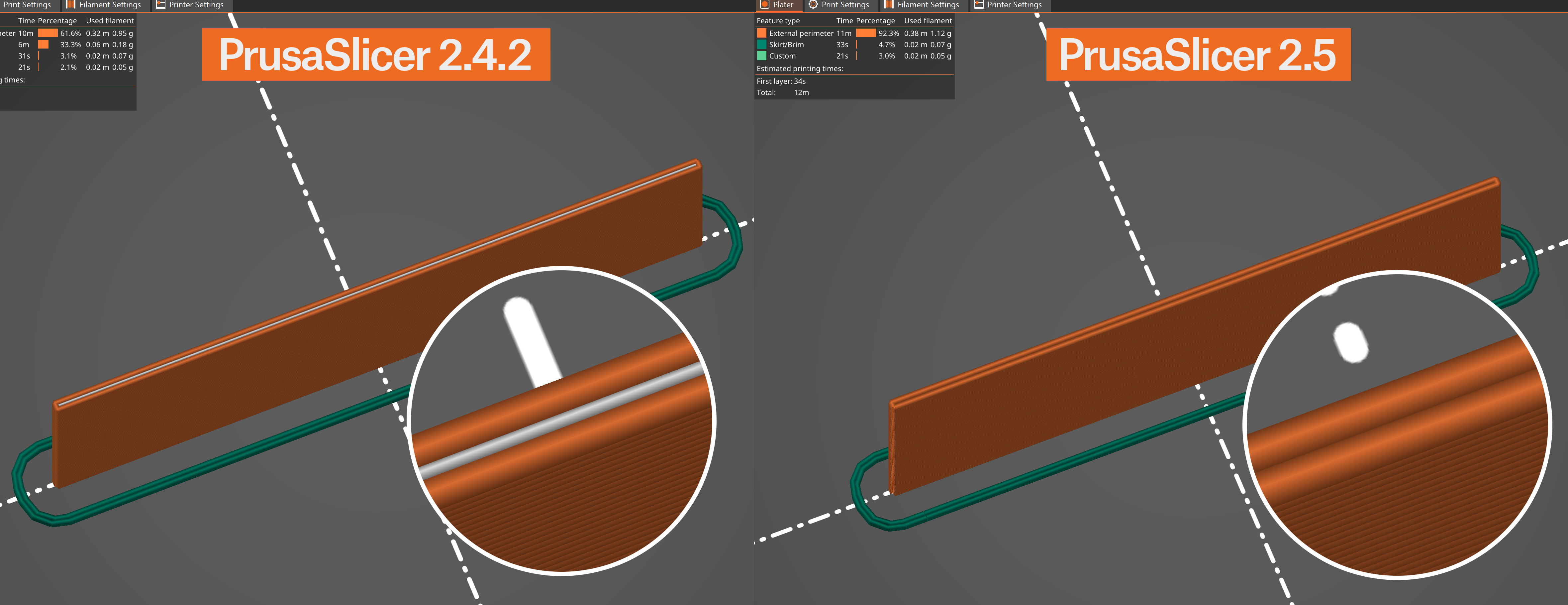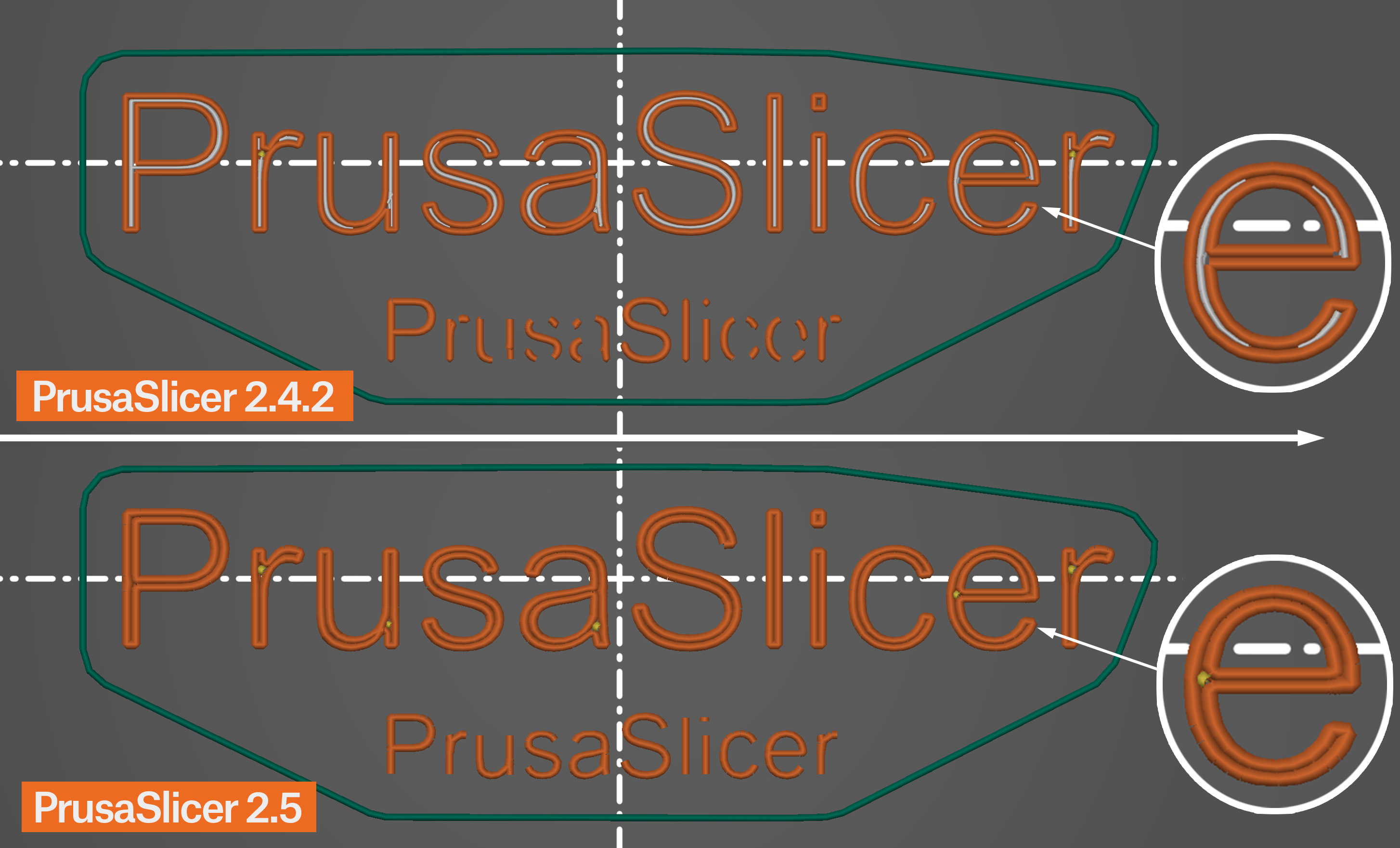- English
- Home
- PrusaSlicer
- Réglages d'impression
- Arachne perimeter generator
Arachne perimeter generator
- À propos de PrusaSlicer
- Configuration et profils
- Interface utilisateur
- Entrée/sortie
- Barre d'outils de gauche
- Barre d'outil du haut
- Réglages d'impression
- Arachne perimeter generator
- Minimum feature size
- Minimum perimeter width
- Perimeter transition length
- Perimeter transitioning threshold angle
- Perimeter transition filter margin
- Compensation de l'effet patte d'éléphant
- Surface irrégulière
- Remplissage
- Motifs de remplissage
- Lissage
- Couches et périmètres
- Vitesse volumétrique maximale
- Supports Organiques
- Pressure equalizer
- Position de la jointure
- Impression séquentielle
- Jupe et bordure
- Mode de découpage / Avions de 3DLabPrint
- Réglages de vitesse
- Supports
- Réglages du filament
- Réglages de l'Imprimante
- Fonctionnalités avancées
- Découpage multi-matériaux
- Découpage SLA
- Autre (PrusaSlicer)
The Arachne generator produces perimeter loops and gap fills with varying extrusion width. Simply put, it automatically makes perimeters wider or thinner as needed.

The new approach produces nicer-looking prints with fewer artifacts. There is a significant reduction in gap fill, small extrusions used to fill gaps between perimeters, which also results in a reduction of print time.
One field where the Arachne perimeter generator really shows its power is when printing texts or small logos. Drawing fonts with constant line width is obviously quite difficult. The new perimeter generator doesn’t have this limitation and produces much cleaner texts even at a smaller scale. 
Classic perimeter generator in PrusaSlicer 2.4.2 vs Arachne in PrusaSlicer 2.5
We have decided to set the Arachne perimeter generator as the default option. If you want to use the old perimeter generator, you can switch to it in the Print settings - Layer and perimeters - Perimeter generator settings.
The Detect Thin walls feature is disabled when the Arachne perimeter generator is selected as it’s not needed since Arachne always tries to adapt the extrusion width to thin lines.
You can adjust the Arachne perimeter generator settings in:
Print settings - Advanced - Arachne perimeter generator
Minimum feature size
Minimum thickness of thin features, expressed in millimeters or as a percentage of the nozzle diameter.
Features thinner than this value will not be printed.
Feature thicker than the minimum will be widened to the minimum perimeter width.
Minimum perimeter width
Width of a perimeter that will replace thin features defined by the Minimum feature size.
Perimeter transition length
When transitioning between a different number of perimeters as the part becomes thinner, a certain amount of space is allocated to split or join the perimeter segments. This value defines the length of this transition area.
Perimeter transitioning threshold angle
An angle at which a transition between even and odd number of perimeters should happen. A wedge shape with an angle greater than this value will not have transitions and no perimeters will be printed in the center to fill the remaining space. Lowering this value reduces the number and length of these center perimeters but may leave gaps or overextrude.
Perimeter transition filter margin
This value is used to prevent transitioning back and forth between one extra perimeter and one fewer. It is expressed in millimeters or as a percentage of the nozzle diameter.
Increasing this margin reduces the number of transitions, which reduces the number of extrusion start/stops.
Commentaires
Vous avez encore des questions ?
Si vous avez une question sur un sujet qui n'est pas traité ici, consultez nos ressources supplémentaires.
Et si cela ne suffit pas, vous pouvez envoyer une demande à [email protected] ou via le bouton ci-dessous.